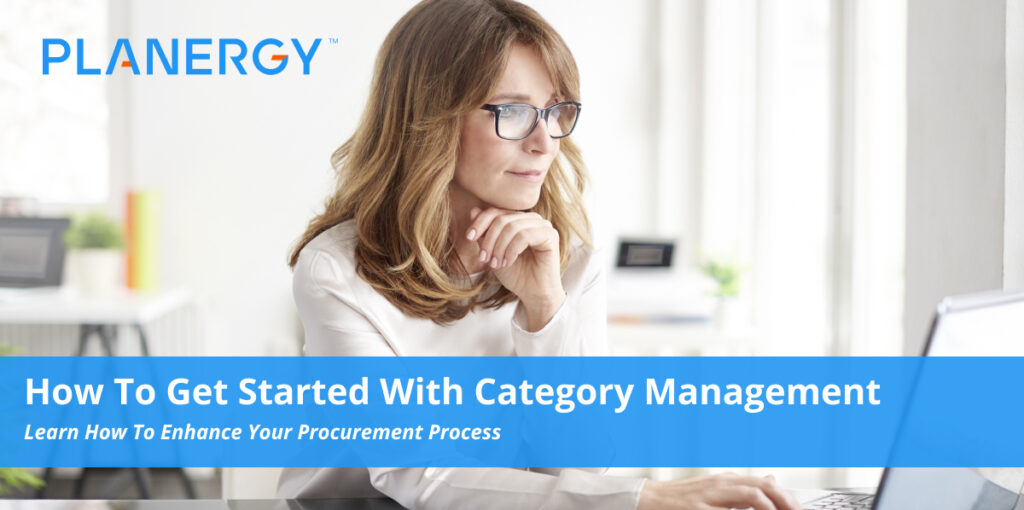Smaller businesses tend to use an informal procurement process and that works well until the business reaches the mid-size level.
As spending increases, so does the ability to leverage that spending power. It means changing the procurement process to get better insight into spending. Ultimately, it means using a category management structure.
The right time to switch to a category management approach depends heavily on the industry you’re in and the revenue you’re generating.
The general advice is that it’s the best approach when you’re earning somewhere in the neighborhood of $200 million and $1 billion in annual revenue.
What is Category Management?
Category management is a method of procurement that allows companies to save money by buying their goods and materials more effectively. By understanding your customer’s needs, you can bundle items into categories.
Essentially, each category is a group of similar items you can buy under a single deal. By looking at items purchased across the company as a whole, then consolidating the agreements into a single contract and price, you’re able to maximize savings while also simplifying supply and demand.
Benefits of Category Management for Your Business
Better Pricing and Terms and Conditions
When your spending is aggregated, your suppliers should be able to work with you to get better pricing and terms and conditions.
You may see it in the form of better payment terms, better unit pricing, or rebates. Using this along with strategic sourcing can help improve your supply chain.
Better Supplier Relationships
With category management, you can establish a single point of contact within your organization. You can also consider using an account management structure to streamline communication.
By coordinating everything at the highest level and delegating tasks to the business unit level, you’re improving supplier relationship management because everything is clarified.
Fewer Supplier Contracts
Because you’re bundling items with your suppliers, you can cut down on the total number of suppliers you have.
Since you have fewer relationships to manage overall, you can focus more attention on developing quality relationships with the ones you have.
You’ll also notice your processes speed up because there’s less to manage in terms of setting up vendors, invoice processing, and risk management.
Shorter Cycles for Purchase Orders and Invoice Processing
Because category management standardizes your business practices, you’ll notice your purchase orders and invoice processing cycles are shorter.
Your category manager has seen SOWs from multiple suppliers, so there’s a better understanding of what they are looking at. Because they understand the pricing, SLAs, and terms and conditions, they’re able to execute everything faster.
Improved Spending Visibility
When there’s no category manager in place for a spending category, no one can say whether the reported data is accurate because that manager isn’t seeing all the contracts that are coming in. Without that, they cannot know the full extent of spending.
However, with a category strategy, there’s someone who is paying attention to everything that comes in.
They are able to manage suppliers, meet business needs, and develop a long-term spending strategy based on supplier performance.
One constant, regardless of the model you choose, is the right tools and software to properly address your spend management.
How to Get Started with Category Management
Before anything else, you must conduct a deep dive into your data to determine how much you’re spending and where. This helps you figure out the areas where you have the most leverage.
This can be a complex undertaking if you’re running any kind of ad hoc transactional program.
If you’re using multiple ERPs, spend time getting someone to normalize all the data first.
When you have a clear understanding of how much you’re spending and where it’s time to develop your category management program to identify opportunities you want to address first and how you want to go about it in terms of resource commitment.
There are multiple ways you could handle category management with your procurement teams.
For instance, you could use a full coverage model, where you have unit level category managers, centralized category managers, or a mix of the two.
Or, you could outsource everything to a consulting company, should your budget allow for that.
Alternatively, you could use a flex model, where you cover most of your categories internally and bring in consultants to handle the infrequent buys where it doesn’t make sense to bring specialized expertise on board permanently.
There are strategic implications for each method, and what works for one company may not work for another.
With the right tool, you’ll only have to do that deep data analysis one time when you first start the category management process.
Without a quality tool, you’ll risk only hitting about 60% of your goals, since the other 40% will likely end up being miscategorized, or uncategorized altogether.
When implemented correctly, your category management program will pay for itself in the short-term, and increase profits over the long term.




